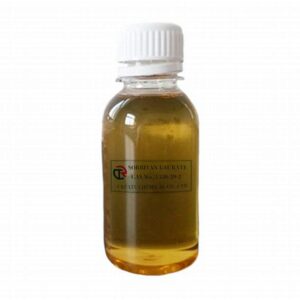Sorbitan Monolaurate (Span 20) – Product Description
Sorbitan Monolaurate, commonly known as Span 20, is a non-ionic surfactant derived from sorbitol and lauric acid. It is a yellowish to brownish liquid that is soluble in oils and has a low solubility in water. Span 20 is widely used in various industries due to its emulsifying, stabilizing, and dispersing properties. It is particularly effective in forming oil-in-water emulsions, making it a popular choice in food, cosmetic, and pharmaceutical formulations.
Key Features:
- Emulsifying Agent: Span 20 helps to stabilize emulsions by reducing the surface tension between oil and water phases.
- Non-Ionic Nature: Being non-ionic, it is less sensitive to pH changes and ionic strength, making it suitable for a wide range of applications.
- Versatile Applications: Used in food products, personal care items, and pharmaceuticals, Span 20 is valued for its ability to enhance texture and stability.
Uses of Sorbitan Monolaurate (Span 20)
- Food Industry: Acts as an emulsifier in baked goods, margarine, and dressings to improve texture and shelf life.
- Cosmetics and Personal Care: Utilized in creams, lotions, and shampoos to stabilize emulsions and enhance product consistency.
- Pharmaceuticals: Used in drug formulations to improve solubility and bioavailability of active ingredients.
- Agriculture: Functions as a wetting agent and dispersant in pesticide formulations.
Technical Data
| Property | Specification |
|---|---|
| Chemical Name | Sorbitan Monolaurate |
| CAS Number | 1338-39-2 |
| Molecular Formula | C18H36O6 |
| Appearance | Yellowish to brownish liquid |
| HLB Value | 8.6 |
| Solubility | Soluble in oils, insoluble in water |
| Density | 1.06 g/cm³ |
| Flash Point | 200 °C (392 °F) |
| pH (1% solution) | 5.0 – 7.0 |
| Storage Conditions | Store in a cool, dry place away from direct sunlight |
Summary
Sorbitan Monolaurate (Span 20) is a versatile and effective emulsifier with a wide range of applications across various industries. Its non-ionic nature and ability to stabilize emulsions make it an essential ingredient in food, cosmetics, pharmaceuticals, and agricultural products. Understanding its properties and uses can help manufacturers optimize formulations for better performance and consumer satisfaction.

